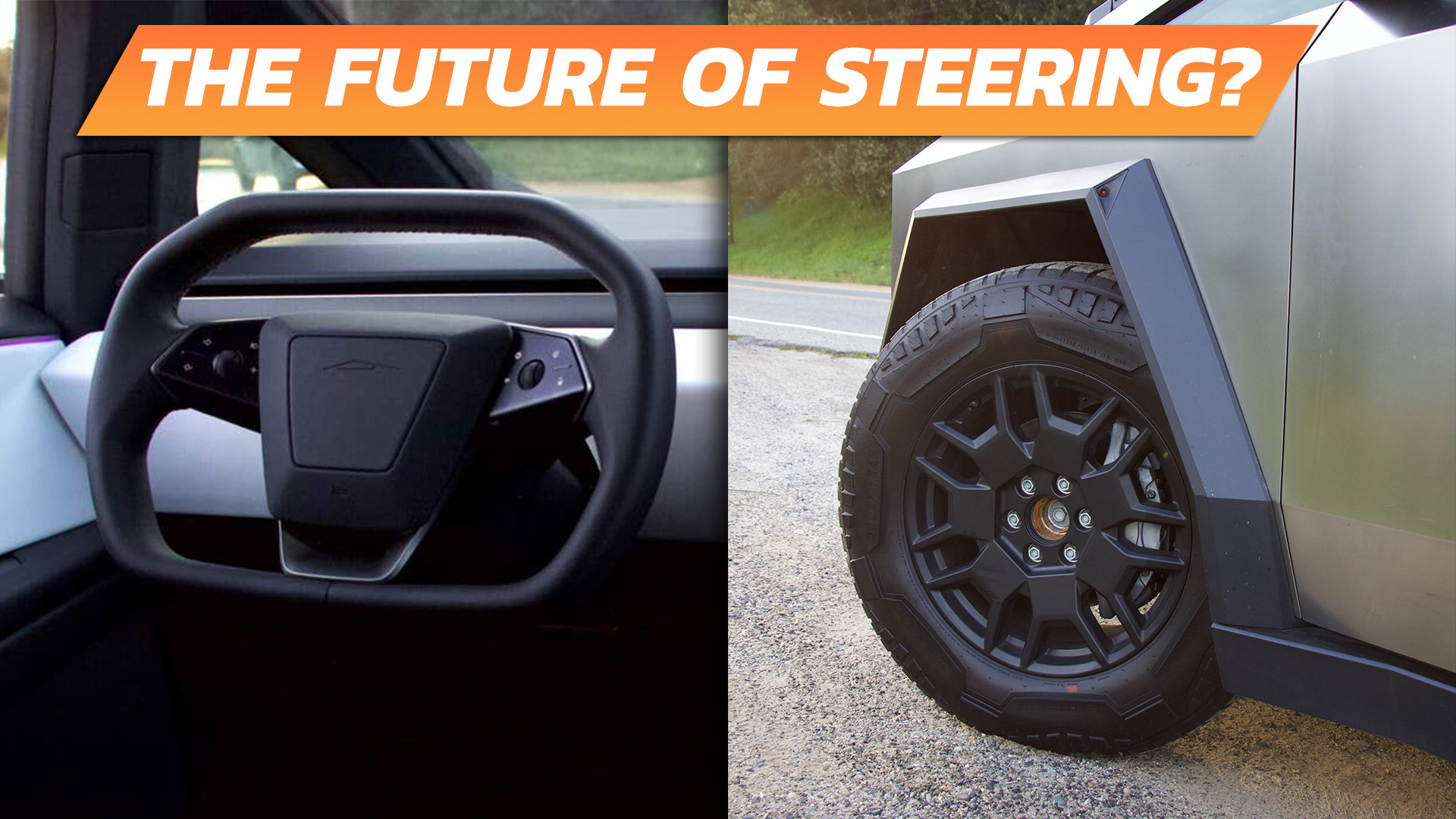I recently drove the Tesla Cybertruck and found that, in most aspects, its form dictates (and limits) its function. No surprise there, but what did surprise me was some of the truly impressive engineering it contains—namely, its unique steering system.
The Cybertruck is the first vehicle on U.S. roads to go fully steer-by-wire with no mechanical linkage between the front wheels and the steering wheel. Lexus and Infiniti have offered steer-by-wire systems before Tesla, but they had mechanical backups. Powered by the Cybertruck’s 48-volt low-voltage architecture (as opposed to the 12-volt systems in most cars), multiple electric actuators move the front steering rack and turn all four wheels in response to inputs.
In theory, it’s a bit unnerving. The thought of removing a safety-critical link between driver and car is a scary one. In practice? I loved it. The variable ratio translates small inputs into deft maneuvers at parking-lot speeds before relaxing for highway cruising. Paired with the Cybertruck’s four-wheel steering abilities, it makes driving a big vehicle much easier and eliminates wasted effort. As I noted in my full review:
“Instead of going hand-over-hand for 90- and 180-degree turns, you just turn the steering wheel about 75 degrees for a right turn, or as far as it’ll go (roughly 120 degrees) to make a U-turn. There’s no hand-over-hand, no shuffle steering, and no guessing as to how far to turn the wheel. It’s a boon for maneuverability, and paired with the Cybertruck’s EV-typical low center of gravity, goes a long way toward making it feel far more agile than it should.”
You can see the quick ratio and just how far the rear wheels turn in this clip:

Importantly, the learning curve is quick. The first few blocks and a couple of right turns felt awkward, and then I got the hang of it. After driving it around 60 miles over the course of a day, I hopped into a brand-new Porsche Cayenne S, a car known for its excellent electric power steering. The Cayenne felt cumbersome in parking garage maneuvers that were no big deal in the much-larger Cybertruck, and the amount of input required felt massive. The Cybertruck’s steering broke my brain and it’s hard to go back.
Now, at this point, I know someone out there is clutching their hydraulically-assisted pearls and asking, “But what about steering feel?” To which I respond: When was the last time you drove a truck with steering that felt good? In a sports car or even a sports SUV like the Cayenne, I want texture and communication from the wheel. But in a pickup, a box truck, or even a city bus? Keep the “feel.” Give me accuracy and maneuverability every damn day.
Yes, the Cybertruck’s steering feels video-gamey and artificial. That’s because it is. Its job is to make a three-ton monster drive like a two-ton crossover, not to make the banked curves of Sunset Boulevard approximate the Nordschleife. But it also feels like the future, at least for trucks and large commercial vehicles where ease of operation is much more important than any sporting pretense.

Also, eliminating the physical steering linkage opens up all kinds of packaging possibilities. Cab-over designs are practical again if safety regs will allow them. Swapping a car from right- to left-hand drive could be as simple as pressing a button. Want to drive from the middle like Gordon Murray or move a vehicle around a job site without getting in it? The world is your oyster.
The better question is safety. Tesla says that “the steer-by-wire system is controlled by multiple redundant sensors and actuators,” so that if one component fails, you’re not screwed. If there is an issue, it says, “an alert displays on the touchscreen, a chime sounds, and Cybertruck gradually reduces drive torque while informing you to pull over.” There’s at least one report of this happening via a series of tweets that have now been deleted.
Of course, mechanical steering components can fail, too. Ever seen a car with a wheel askew from a bad tie rod or ball joint? The difference is that these mechanical parts typically wear out and show signs of wear and degradation before failing outright, and a driver might retain some degree of control even with just a single wheel on the ground. Also, steer-by-wire cars still have the suspension components responsible for keeping the wheels in check, so they’re not eliminating the potential for these faults.
While I do have some reservations about handing a safety-critical system like steering or braking completely off to computers, there’s no denying that in the Cybertruck’s case, the tech is well-calibrated and could make a huge difference in drivability and maneuverability for the largest vehicles on our streets. In a car world where it’s increasingly tedious to break new ground, Tesla has broken some. Like most things in the company’s orbit, just think of it as a beta test.
